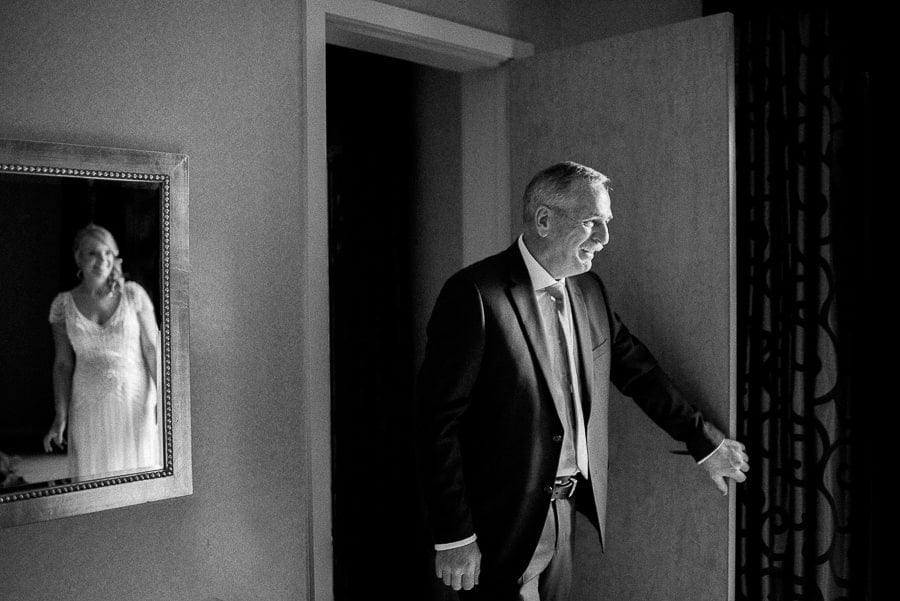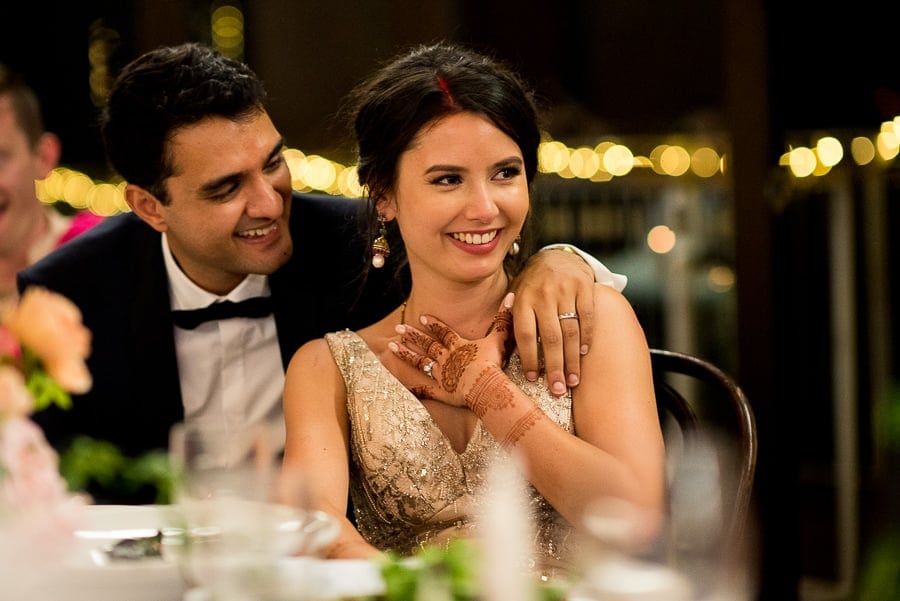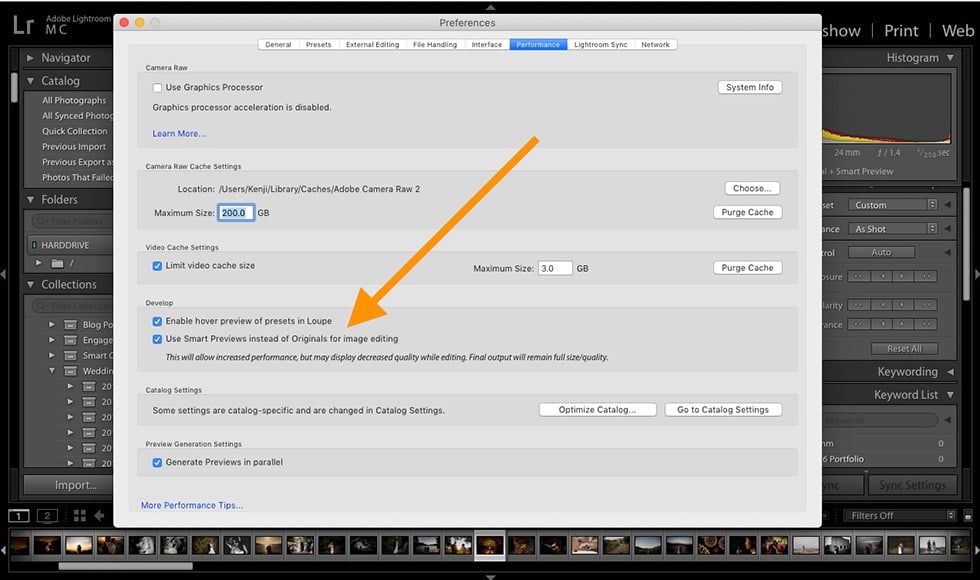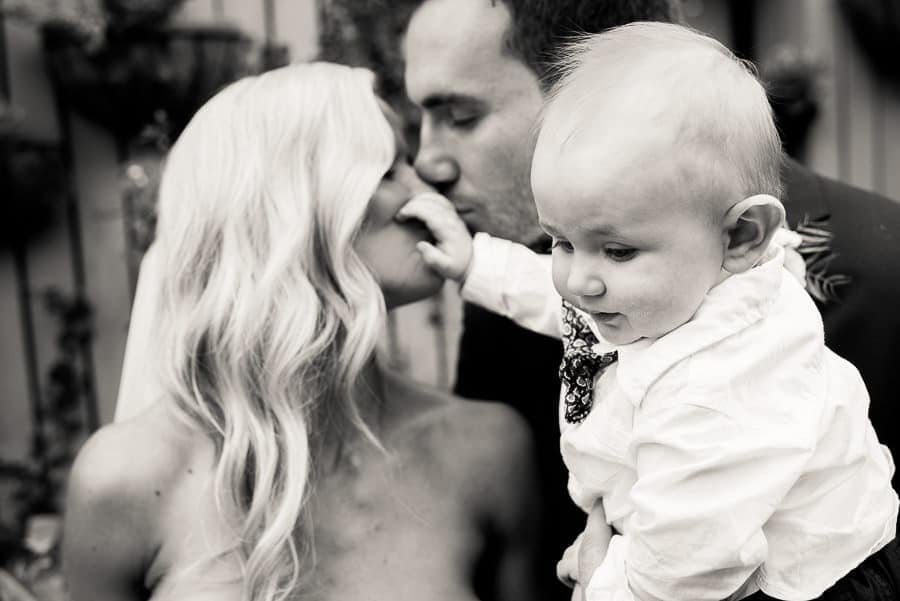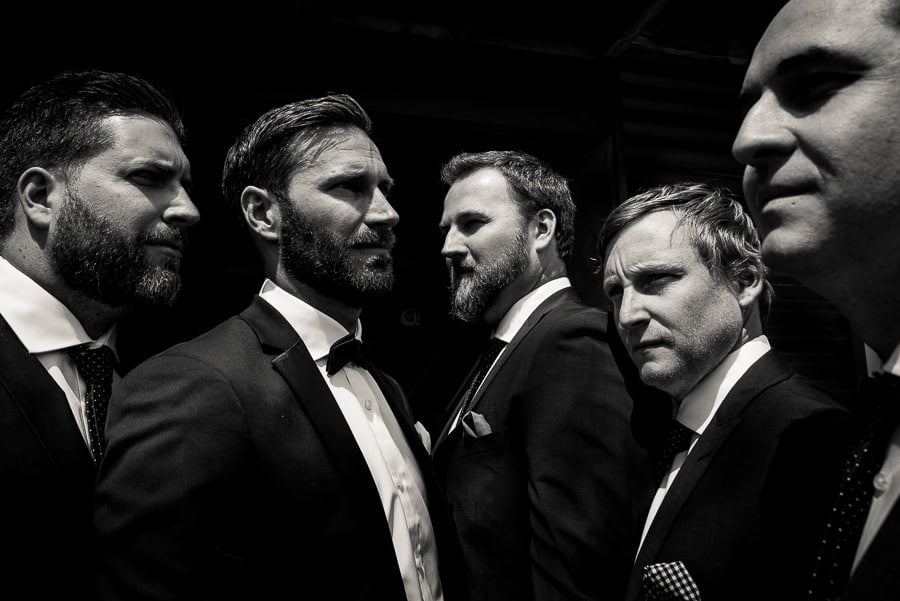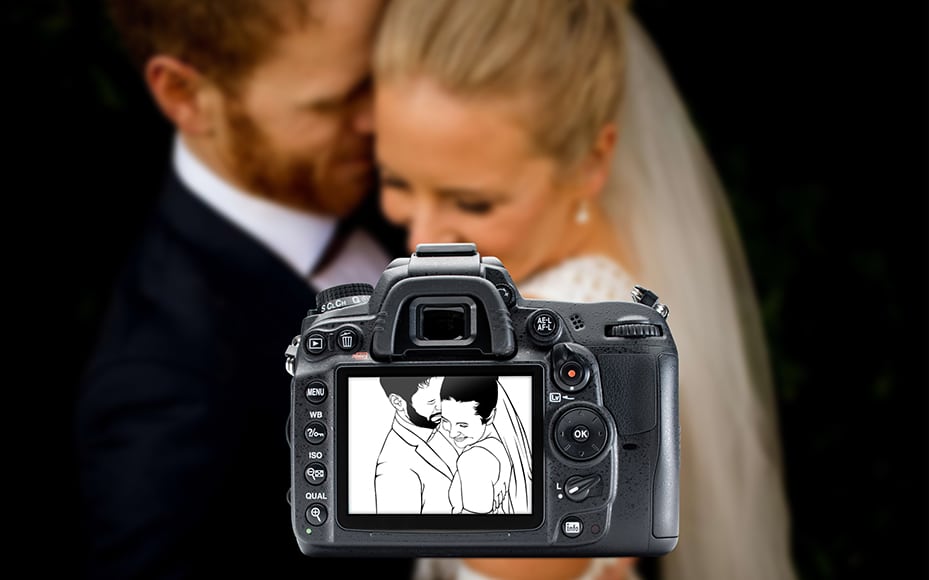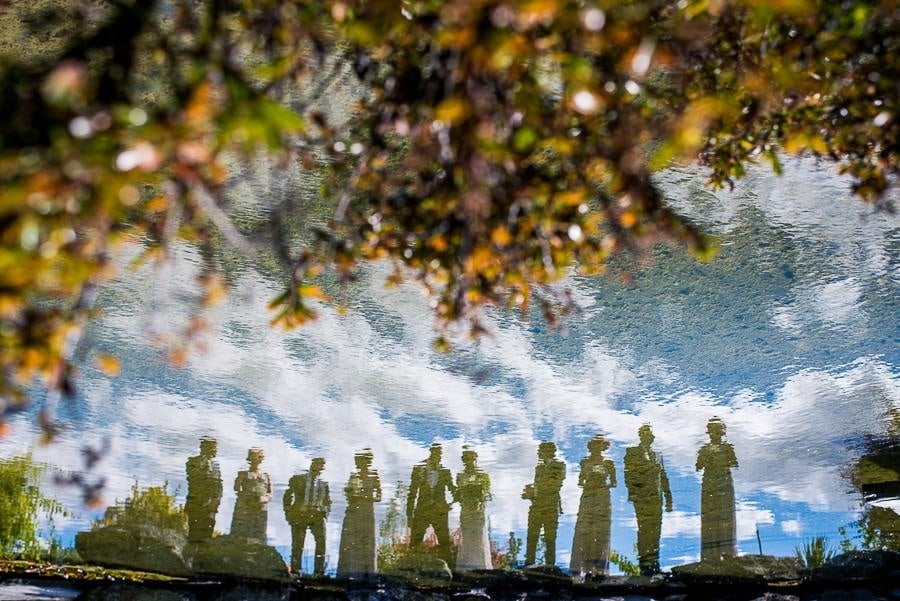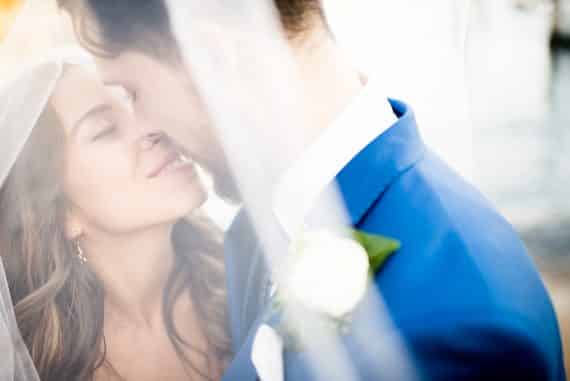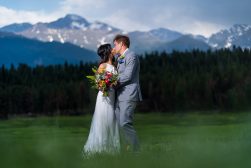
Wedding Photography Tips: How to Photograph a Wedding in 2023
I've shot hundreds of weddings around the world. Here are my 18 BEST wedding photography tips for beginners on shooting, editing and everything in between.
Learn | Wedding Photography | By Mark Condon
I’ve been a professional wedding photographer for over 7 years, having shot hundreds of weddings all over the world.
Wedding photography is an amazing profession. It’s rewarding (both financially and emotionally) and can be a lot of fun too.
It’s also hard work and at times, stressful and frustrating – much like any other job!
Every wedding day is different. Every bride and groom, every family member, their friends – you’ll encounter new challenges every time, and that’s what makes it so exciting!
In this guide, you’ll discover 18 wedding photography tips to help you get started learning how to photograph a wedding.
These are the tips for wedding photography I’ve learned through experience, from meeting other wedding photographers and attending workshops.
So let’s get stuck in!
Table of Contents
18 Wedding Photography Tips for Beginners
Here’s a mixture of tips on how to take wedding photos for beginners and more advanced photographers.
Even if you’re a professional wedding photographer already with your own successful wedding photography business, you’ll still learn some new tricks here to make your job even easier.
1. Get the best gear you can afford (or hire it!)
Wedding photography includes all manner of different types of photography all wrapped up in one day.
Close-up photos of wedding rings? Macro. Venue shots? Architectural. Bride and groom? Portrait, etc.
You’ll also need to shoot in all environments and in all conditions. A candle-lit church service will really put the high ISO performance of your camera to the test!
If you’re taking up wedding photography as a profession, you’ll need to invest in the best camera gear you can afford.
I didn’t want this article on wedding photography tips to be heavily gear-focused, but the fact is, you do need to make an initial investment in the right equipment.
Make sure to get a backup of all the main items – cameras, lenses and flashes. This can be a significant capital outlay but remember you can always hire equipment too.
Let’s take a look at the bare minimum wedding photography gear that you need.
- Cameras
You can get great wedding photos with any camera, but most wedding photographers use full-frame cameras with at least 24MP resolution.
Full-frame sensors allow you to shoot in lower light without having to resort to higher ISOs. They also mean you can blur more of the background, depending on the lens you’re using.
You need a camera that shoots ‘clean’ photos at high ISOs, e.g. ISO1600+, and preferably one with good battery life and great autofocus too.
Dual memory card slots are essential too, despite what Canon EOS R owners may tell you!
Many wedding photographers switch from DSLRs to mirrorless cameras for various reasons, but there’s definitely nothing wrong with a DSLR.
As for your backup camera, it doesn’t have to be the same model as your main camera, but it’ll definitely help when you switch between the two.
(If you choose to carry 2 cameras at once, it’s a huge help if they both have the same controls.)
What’s the best camera for wedding photography? In my opinion, the Sony a7III offers the best bang for the buck in 2023, but any full-frame camera will serve you well.
- Lenses
There’s a huge variety of lenses to choose from for wedding photography – everything from wide-angle to telephoto, with macro, tilt-shift and fisheye optional for some variety.
If you can only afford one lens, I’d recommend a 24-70mm f/2.8, which will allow you to shoot an entire wedding quite easily. Don’t be tempted by an f/4 variant, since your camera will struggle in low light.
It’s also a good idea to pack a ‘nify-fifty’ 50mm f/1.8 as a backup lens, and as something you can rely on in low light situations.
Many wedding photographers carry zoom lenses. The 24-70mm and 70-200mm is a popular combination since it allows for a large variety of ‘looks’ without a lot of lens changing.
It’s also popular to shoot with only prime (fixed focal length) lenses due to the dreamy renditioning of an image shot with a large aperture and the ability to blur messy backgrounds.
It’s hard to shoot a wedding with just one prime lens, but it could be done with a 35mm or 50mm.
Most photographers use a combination of wide and long: 35mm + 85mm (my preference), 24mm + 85mm, etc.
Over time, you’ll amass a number of lenses, then whittle your selection down to the ones that allow you to work the most efficiently.
- Flashes
No matter how well your camera can handle high ISOs, you should still bring along a couple of flashes for wedding photography.
The brand/model isn’t so important – just decide if you need TTL or if you’re comfortable with manual mode.
For off-camera flash, you’ll also need to get some wireless triggers, and you may want to experiment with coloured gels, grids and other light-shaping accessories.
Check out LIT for some inspiration and tutorials on lighting techniques and read our guide on how to use flash at weddings.
- Other accessories
Some products are essential, such as spare batteries and memory cards, while others such as camera straps, bags, drones, tripods, etc are optional.
Trust me – there are a lot of toys to choose from :-)
2. Invest in the right software tools
Amongh all the various wedding photography tips that you’ll read online, getting the right software is often the most overlooked.
For many wedding photographers, the challenge of their profession lies not in the taking of photos but moreover, in all the various tasks involved with managing their business.
From client emails to marketing, editing, delivering and backup, there is a myriad of tasks in order to run a profitable wedding photography business.
Although you may have second shooters, it’s likely you’ll start off solo as a wedding photographer, which means you’re in charge of absolutely everything!
Thankfully, there are plenty of great software tools you can use to make your life easier.
Over my years shooting weddings and reviewing software for Shotkit, here’s what I consider to be the best options for you:
- Studio Management: Studio Ninja
Get yourself organised before you get too busy – all professional photographers need a CMS, and Studio Ninja is the best one I’ve used. Their support is fast and friendly too.
Use code SHOTKIT to save 50%
- Editing: Lightroom
Despite all the great alternatives, Adobe Lightroom is still the wedding photographer’s number one choice for editing and managing photos. Some photographers use it in conjunction with PhotoMechanic for the culling process.
- Client Galleries/Image Sharing: ShootProof
The days of sending your couples a USB containing their photos are numbered. Most wedding photographers use an online gallery platform, and my choice is ShootProof. You can also use it for cloud storage as an online backup.
Use code SHOTKIT25 to save 25%
- Album Design: Smart Albums 2
Make sure you have a wedding package that features albums or other photo products. SmartAlbums 2 makes album building and client-proofing easy.
- Website: Flothemes
Once you have your domain name and hosting, it’s time to invest in a good-looking website theme – the most popular choice for wedding photographers in 2023 is Flothemes.
Use code SHOTKIT25 to save 25%.
- Image Compression: Rawsie
Shooting thousands of photographs each wedding will leave you with a ton of image data to store – solid-state hard drives are the fastest option, but remain expensive. Use JPEGMini to reduce the size of JPEGs and Rawsie to do the same with Raw files. See the Rawsie review.
Use code SHOTKIT10 to save 10%.
- Outsourced editing: ImagenAI
Once you start to book lots of weddings, an easy way to scale your business is to outsource your image editing. ImagenAI is an affordable, fast and efficient option, allowing you to preserve your unique style. See our in-depth ImagenAI review for more.
- AI-Aided culling: Narrative Select
Most photographers hate culling their photography, but did you know you can use Artificial Intelligence to help? Narrative Select helps you choose the ‘keepers’, as well as zooms in to faces in group shots to help you weed out the ‘blinkers’. See the Narrative Select review. Another great option for culling is AfterShoot.
Use link above for a 10% discount.
3. Get to know the couple before the wedding

Engagement photo shoots can be a great way to break the ice.
If you want to be a great portrait photographer, you need to do more than just take pictures. You need to get to know your subject and connect with them on some level.
The same is true for wedding photography. The better you know your couples and the more they trust you, the better their wedding photos will be.
Depending on your circumstances, you might not have time to meet up with the bride and groom in person before their wedding.
Ideally, you’d be able to take some engagement photos together to get to know each other or meet up for a coffee to chat about their expectations of you as a photographer, but this isn’t always possible.
As a bare minimum, you need to provide your couples with a questionnaire that asks things that reveal a bit about their personality.
Ask them about their favourite foods, movies, date ideas – anything that you can use to connect with them on their big day, to make them feel more at ease.
You could also ask the bride and groom separate questions, like how they felt when they first saw each other – revealing this during the bridal portrait session can lead to some candid and emotional moments.
How to take wedding photos isn’t just about technical aspects – there are a lot of interpersonal relationship qualities that you’ll need to master too.
4. Show what you want to shoot
This is an old wedding photography tip, but it’s still relevant today. It refers to showing only the type of photos on your blog and on social media that you want to shoot in the future.
If you show blog posts with the wedding dress laid out perfectly on a bed, or the wedding ring styled beautifully next to the bride’s shoes, guess what? Your next bride will expect those photos.
If, however, you go against the grain with a wedding photojournalism style and show candid photographs of natural couple poses, or use creative lighting techniques for editorial-style images, your next clients will book you for that style of image.
If you want to be a destination wedding photographer, guess what? You need to show destination weddings!
What if you’ve never shot a destination wedding… or any wedding at all? Well, you need to work as a second shooter or stage a styled photoshoot, so you have the necessary images to display online in your portfolio.
You’re in control of the type of couples you attract, so use your online presence to your advantage.
5. Wedding photojournalism can still be ‘posed’
You’ll see plenty of wedding photo tips elsewhere that tell you to do everything as a fly on the wall, without interrupting the natural flow of the day.
However, if your goal is to be a pure wedding photojournalist… good luck with that!
While waiting for the perfect moment to unfurl before your eyes is admirable, you don’t always have that luxury at a fast-paced wedding.
I’m a complete advocate of the photographer being totally unintrusive to the natural flow of a wedding day, but experience has taught me that you can still lend a hand to make those moments even better.
An example is the first look. You can capture the moment the groom sees the bride for the first time without interference, but you can still guide them on where to stand for the best light or background.
During the bridal portraits, don’t be afraid to give the couple a ‘starting point’ with a loose pose, like “go over there and give each other a hug.” Then, simply capture all the candid moments that occur naturally after that.
Another great tip is to use photography prompts, such as: “Whisper into her ear why she’s the only one in the world for you.” – then, capture the emotional moments that follow in a photojournalistic way, and the images will still look beautiful and natural.
6. Learn to bounce flash
Among all the technical wedding photography tips and camera settings for shooting weddings, this tip is key to getting great photos after dark.
On-camera flash has a bad reputation for having unflattering results, but that’s only when you don’t know how to use it.
As much as we all want to only use natural light for our wedding photography, there comes a time during the wedding reception where you have to bust out a flash!
The simplest on-camera flash technique that yields the best results is bounce flash, where you point the flash head at an angle to your subject and ‘bounce’ it off a wall/ceiling/guest etc.
You can use TTL or manual power mode, but always try and find something with a neutral colour to bounce off.
You can also bounce the flash from a distance when photographing wedding speeches or the wedding party from afar – at full power, you’ll be surprised how far the light will travel.
What if there’s no surface to bounce off, like at an outdoor reception? Don’t be afraid to use direct flash – just try feathering the light by lifting the flash head slightly and experimenting with the zoom/power settings.
7. Learn SEO to appear above other wedding photographers
This one may not strictly be a part of wedding photography tips for beginners – it’s more for
Blogging your latest wedding and pre-wedding photos is popular in the wedding photography industry, but it doesn’t need to be a necessity.
While having an online presence is essential, writing about all your latest work and targeting the same wedding photography keywords each time can actually be detrimental.
With a bit of SEO knowledge and planning, you can build a wedding photography business website that’s attractive, useful to potential clients, AND pleases Google.
Focusing on ‘evergreen’ content such as venue guides and wedding planning tips is much more beneficial for bringing you long-term traffic, and with a well-planned site structure, you can still rank for those lucrative wedding-related keywords.
I teach these techniques in More Brides.
8. Edit your wedding photos quicker
When you first start wedding photography, your post-production will usually take a long time. However, the more weddings you shoot and the more you edit, your speed should quickly improve.
Here are some ways to make that happen:
- Use an import preset – import your photos with a preset that applies your base edits that you do on every photo. Here are some free presets for Lightroom.
- Create smart previews on import – this makes Lightroom much faster.
- Cull positively – when culling your images, only select the keepers. Ignore the other photos, which you can delete or archive later.
- Use shortcut keys – learn all the main Lightroom shortcuts or set new ones up for actions you regularly perform.
- Consider AI culling – a tool called Narrative Select automates the process of finding ‘keepers’ and provides an enormous help when checking faces in group photos.
- Consider outsourcing – if you’re shooting lots of weddings, want to scale your business, or simply don’t like editing, outsourcing your editing is a game-changer. I recommend ImagenAI for a fast and affordable solution.
Being a successful wedding photographer depends a lot on your post-production workflow. If you shoot lots of weddings and spend 10 hours editing each one, you’ll quickly burn out.
Learn how to edit faster, or hire someone else to do it for you. Then, concentrate on marketing (see guide) and getting better at your craft.
9. Educate your clients on your responsibilities and theirs
This is one of those wedding photography tips that’s often overlooked by beginners, but ask any professional wedding photographer whether it’s relevant and they’ll give you a resounding yes.
In the USA, wedding planners are the norm. However, here in Australia, they’re much less common, and perhaps it’s the same in your country too.
Whatever the case, it’s important that you educate your couples on where your responsibilities lie on the wedding day, both in a contract and through your other communication.
Feel free to give all the planning guidance you want prior to the big day, but be clear about what you will and won’t be in charge of.
An example is the family photos which normally take place after the wedding ceremony. The bride and groom will often expect the photographer to herd their families together, making sure the right members are in each photo.
This can be a huge stress, not to mention an inefficient use of time.
Long before the wedding day, you should ask the clients to appoint a bridal party or family member to be in charge of the name-calling/cat herding duties.
Also, while you may have a basic shot list of the essential photos to take at each wedding, you can’t possibly know the face of every VIP guest, or any surprise events that are scheduled to occur.
This, too, needs to be discussed prior to the wedding day. Ask your couples if they have any ‘must-have’ wedding photos or even a shot list of their own. Get it all down in the wedding questionnaire – this way, there’ll be no disappointments.
10. Be a confident wedding photographer, not an obtrusive one
When you’re just getting started with wedding photography, it’s natural that you’ll lack confidence, but it’s important to keep reminding yourself what you’ve been paid to do.
You are the wedding photographer! Your job is to get great photos! If this means standing in front of Uncle Bob with his fancy camera for the first kiss, so be it! If this means asking the celebrant to stand to one side for the ring exchange, so be it!
With experience, you’ll learn to anticipate when moments are about to occur, but you’ll still need the confidence to get the shot each and every time.
That said, don’t be obtrusive. Mind your manners, and if you can remain low, silent and stealthy to get the photos you need, please do so.
Switch your camera to silent mode to cover the ceremony and creep around like a ninja.
The wedding guests will remember a courteous photographer who remained quiet and hidden during the majority of the wedding ceremony – among those guests may be your next bride and groom, so make a good impression.
11. Learn to use light in your wedding photography
This tip is appropriate for all forms of photography, but at weddings, it’s all the more important.
Obviously, you have no control over the weather on a wedding day, but that doesn’t mean you can’t use light to your advantage.
Learn how to create shade on the face of your bride at high noon during bridal portraits by angling the groom to block the harsh light.
Learn how to find diffused light under the tree canopies, or how to use directional light to create depth and contrast.
Position bridesmaids near window light during their hair and make-up preparations, or if all else fails, use the make-up artist or hairdresser’s ring light for a DIY glamour shot!
Techniques like off-camera flash can elevate your wedding photography and help differentiate yourself from the legions of natural light shooters.
Learn all the various flash photography techniques and experiment with coloured gels, grids, snoots, high-speed sync and more – the LIT book breaks down some creative lighting techniques.
12. Get high, then get low
One way to quickly improve how your wedding photography looks is to experiment with camera angles – try lifting your camera up high and taking a shot, then putting it at waist height, or even on the ground, and taking another shot.
Varying the height offers the viewer something that’s unusual, which creates interest.
Try climbing on chairs or using drones to get a bird’s eye view of the wedding venue or wedding party.
Then try placing your camera down in the grass during the wedding ceremony and shooting along the aisle for a worm’s eye view of the couple tying the knot.
These may seem like simple tips, but it’s things that no wedding guest will do – even if everyone’s taking photographs of the newly weds’ first kiss, yours will be different, and hopefully, better too!
13. Nail the group shots
Photos of groups of people can be intimidating, especially at weddings. Whether you’re photographing the bridal party, groomsmen, bridesmaids or family members, it’s important that you get some great group shots.
Here are some quick tips:
- Choose a safe aperture – don’t shoot group shots wide open! Depending on your lens, your distance from the group and the way the group is arranged, you should use an aperture of f/4 or more to ensure every face is in sharp focus.
- Remove sunglasses – it looks weird if some people in the group wear them and some don’t.
- Watch for huggers – if men hug each other in a line, their jackets ride up and look ugly. Ask them to remove their jackets or hug lightly around the waist, if at all.
- No hands covering balls – don’t let men stand like defenders in front of a football freekick!
- Get girls and close family to ‘connect’ – hands on shoulders, around waists, held together, etc.
- Take lots of photos – this is really important. The larger the group, the more chance of ‘blinkers’. Take enough photos to ensure you have a photo with everyone with their eyes open. Narrative Select can help you find the best shots.
See also these creative and funny groomsmen photo ideas
14. Learn to pose for dynamic wedding photography
If you’re scared of posing the bride and groom, think of it more as ‘directing’. Imagine yourself as a movie director, giving encouragement to your actors in a scene.
Wedding poses don’t need to be stale, awkward and rigid. Provide simple direction cues to the bride and groom as a starting point, then introduce humour, distraction or even some distance to encourage something natural to emerge.
Analyse your favourite wedding photographers’ images to see why their poses work so well.
Pay attention to hands – they can portray a lot of energy and passion if you pose them in the right way, or give the right cues.
Have a shot list of poses to fall back on – an easy way to do this is to use Together Cards, which can help maintain the flow of the photoshoot while allowing you to direct with confidence.
15. Moments are what matter most
Despite all those ‘epic’ destination wedding shots you see on Instagram of the bride and groom in front of a waterfall in Iceland or the bride posed dramatically on a cliff edge somewhere exotic, these are not always the clients’ favourite photos.
Remember to concentrate on getting as many candid images of people at the wedding ceremony and wedding reception as possible.
You might have an inspirational phone photo album full of creative wedding photography ideas you want to pull off on the big day, but don’t forget about the ‘moment’ photos.
Focus on the couple and their close family – learn to anticipate moments before they occur, and capture something truly unrepeatable.
While it’s great to throw a few epic shots into your portfolio, it’s the photo of the bride’s mother crying as the bride and groom walk down the aisle that your clients will treasure forever.
Magical, emotionally charged moments trump everything else. Don’t be afraid to include photos that aren’t ‘technically’ great – as long as there’s a special moment, your clients won’t care.
Pay special attention to what’s happening during the wedding party – after a few drinks, family and guests will loosen up and show some great emotions.
16. Don’t be afraid to have a shot list
Among all the best wedding photography tips you’ll see online, it’s often the simple things that get missed.
Until you feel comfortable photographing weddings, it’s OK to have a shot list to remind yourself of the ‘standard’ images to capture.
Must-have images might include the getting ready moments, the bridal portrait, the bouquet, the boutonnieres, the bridal party, the wedding venue, the walk down the aisle (aka the processional), the ring exchange, the first kiss, the exit, the place settings, the cake, the first dance, the bouquet toss, the garter toss, etc.
As long as you cross the ‘basics’ off your shot list, you can concentrate on capturing moments and injecting some creativity into the rest of your wedding coverage.
Eventually, of course, you’ll no longer need a shot list – everything will come naturally.
17. One wedding photo for the client, one for you
During the bridal portraits (photos of just the bride and groom or of the groomsmen and bridesmaids), it’s your time to start experimenting.
One fun/safe way to experiment is to think of the session as photos for both you and your couple. Take a few ‘safe’ shots for the couple, then do something more daring and creative – these can be ‘for you’.
Whether you end up delivering the ‘for you’ photos or not isn’t relevant – what’s important is that you step outside your comfort zone to really push yourself creatively.
Break out some off-camera flash lighting techniques. Try shooting through an object. Play around with your tilt-shift lens. Just experiment with something new and see what you can achieve.
The ‘one for the client, one for me’ mentality takes some of the pressure off the process of experimentation and can help you unlock something special with your wedding photography.
18. Find inspiration elsewhere (not just other wedding photographs)
Amazing wedding photography is everywhere you look on social media.
While it’s nice to get some inspiration from your favourite wedding photographers, there’ll come a time when you need to look elsewhere.
Pay attention to movies, movie posters, commercials, music videos, magazine covers – anything featuring people shot in unusual or creative ways that catches your eye.
Also, follow the work of photographers from other genres – street, sports, portrait, fine art photography – anything that keeps you motivated to keep creating something wonderful for your clients.
You can always check the work of wedding photographers right here on Shotkit, but be sure to cast your net of inspiration a bit wider too.
Becoming a Great Wedding Photographer | Final Words
Wedding photography has been a wonderful profession for me over the years, and I highly recommend you consider taking it up professionally.
Despite it being a competitive industry and a job that’s often stressful and physically demanding, wedding photography is also enormously rewarding and a lot of fun.
Weddings are unique things. Everyone is happy, well-dressed and emotionally charged. Anything can happen, and it’s your job to capture as much of it as you can!
If you’re just getting started with wedding photography, I really hope these tips have helped. Leave a comment below if you have any questions and I’ll be happy to respond.









